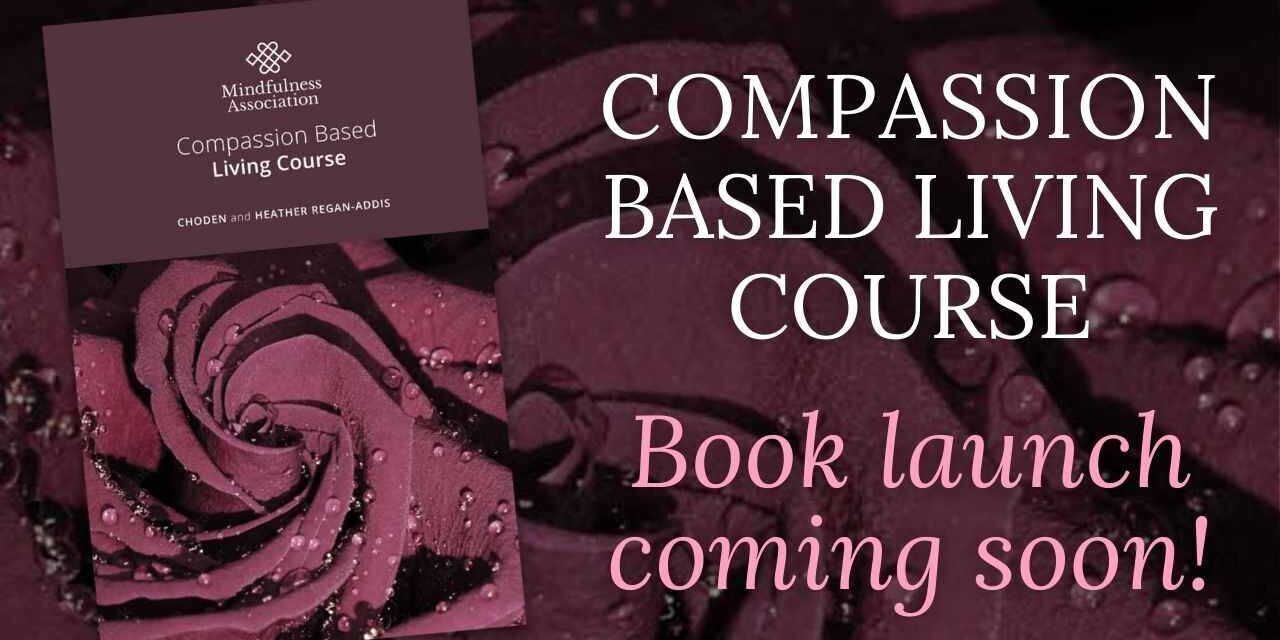New Compassion Based Living Course Book
The Compassion Based Living Course, is a self-guided compassion course based on Choden and Heather’s fifteen years’ experience of teaching in depth compassion meditation courses to thousands of students. It draws on compassion teachings and practices from Mahayana Buddhism, which have been adapted to make them accessible to a Western audience. The book presents the theories and practices of compassion in simple psychological terms, in a systematic, step-by-step way, including audio of guided meditation practices.
This book provides a thorough grounding for anyone who is interested in the topic of compassion, but in addition provides a step by step experiential path to become a more compassionate human being. The authors’ experience is that training in mindfulness meditation is very beneficial, as is well known and widely researched. However, training in compassion meditation is transformative. Self-critical people weighed down by the weight of the world are transformed into cheerful and courageous people well equipped to surf the waves of life.
A distinctive aspect of this compassion training is the idea of the compassionate mess, which was first articulated by Rob Nairn. We recognise that the human condition is a messy business. That the human brain is evolved for survival and not happiness. That we are subject to conditioning from our childhood and our culture and society. The result is a ramshackle collection of habits that we carry with us and act out all the time. We recognise that we did not choose to have this evolved tricky human brain, we did not choose our conditioning and so we can let ourself off the hook of self-blame for the messiness of life. It is such a relief to recognise that the human condition is not one of perfection. Instead we can offer ourselves some compassion and become a compassionate mess.
One aspect of the training, which we cover in the book, is the use of compassionate imagery, originally derived from Tibetan Buddhist deity practices, but adapted to our Western context. Using our imagination we each cultivate our own compassionate being, which embodies the qualities of compassion, such as kindness, strength, courage and wisdom. Our compassionate being is there for us unconditionally, whenever we need to draw on it’s qualities to support us when we are facing a difficulty. Over time we begin to embody the qualities of the compassionate being and step into our compassionate self.
Then we draw on the Buddhist principle of Mandala, in which our compassionate self is in the centre and all the struggling aspects of ourself are on the periphery. The struggling aspects might be our anxious self, our sad self, our self-critical self, our driven self, etc. We then imagine inhabiting the compassionate self and offering the qualities of compassion to the struggling aspects of ourself. In this way we are able to hold and care for those aspects of our self which struggle in life.
In the book we begin with self-compassion and then move on to compassion for others, within the context of the four immeasurable qualities of kindness, compassion, joy and equanimity. Kindness is a wish for ourself and others to be happy and compassion is a wish for ourself and others to be free from suffering. Therefore, any training in compassion requires us to face our difficulties and cultivate the resources to respond to our suffering in a skilful way. Because of the inevitable focus on suffering, this book has a consistent focus on cultivating gratitude and appreciation for the good things in life, so that we become more joyful. Cultivating joy in this way is an important resource to enable us to face the difficulties in our life.
Towards the end of the book we explore the powerful Tibetan Buddhist compassion practice of tonglen or taking and sending. In this practice we reverse our usual habit of wanting to hold onto what is pleasant and to get rid of what is unpleasant. In this practice, as we breathe in we take in the energy of suffering and as we breathe out we send out the energy of compassion. For example, we might imagine a dear friend who is suffering sitting front of us and as we breathe in we take in the energy of their suffering and as we breathe out we send to them whatever is required to relieve their suffering as an energy of compassion. We do this until all their suffering is transformed into compassion.
If this seems like a step to far, don’t worry, you are not on your own in thinking this. Over the years the authors have developed different ways to make this practice accessible. For example, we do a tonglen movement practice, do the practice by first stepping in to our compassionate self, and resource our compassionate hearts with the energy of compassion before we begin the tonglen practice. In addition, we trust that all the suffering is effortlessly transformed in our compassionate hearts into the energy of compassion, a bit like hot air being cooled in an air conditioner. Many of our students find this practice challenging to begin with, but over time find it to be a very powerful practice to respond with compassion in the most difficult of times.
Choden lives in Edinburgh and has been a practicing Buddhist in the Karma Kagyu lineage of Tibetan Buddhism for forty years and has been a monk for much of this time. He completed a three year, three month retreat in 1997. He is originally from South Africa where he trained as a lawyer and learned meditation under the guidance of Rob Nairn, an internationally renowned Buddhist teacher. He co-wrote a book with Prof. Paul Gilbert in 2012, entitled ‘Mindful Compassion’ that explores the interface between Buddhist and Evolutionary approaches to compassion training.
Heather has has been a practicing lay Buddhist in the Karma Kagyu lineage of Tibetan Buddhism for twenty years and also began her meditation training with Rob Nairn. She has a Post Graduate Diploma in Mindfulness Based Approaches from the University of Bangor, Wales and has a Masters degree in Studies in Mindfulness from the University of Aberdeen. She worked for 20 years as a Patent Attorney and gave this up to teach meditation. More recently, she has been working as a Buddhist healthcare chaplain in the NHS, where her training in compassion, particularly the practice of tonglen has been incredibly helpful.
Choden and Heather were brought together fifteen years ago by their meditation teacher Rob Nairn. Choden worked with Rob on their first mindfulness course, on which Heather was initially a student. Rob knew that Heather had been training in Mindfulness Based Approaches on the MSc course at the University of Bangor, Wales and so he asked her to join the teaching team for the final retreat that first mindfulness course. The following year Rob, Choden and Heather embarked on their first training course in Compassion.
Choden and Heather have been working together since then founding the Mindfulness Association in May 2010. Then in September 2010 they partnered with the University of Aberdeen in the launch of their successful MSc in Studies in Mindfulness on which the authors both teach. This MSc provides both experiential training and academic study of mindfulness based on the Mindfulness Association’s first three levels of meditation training Mindfulness, Compassion and Insight.


